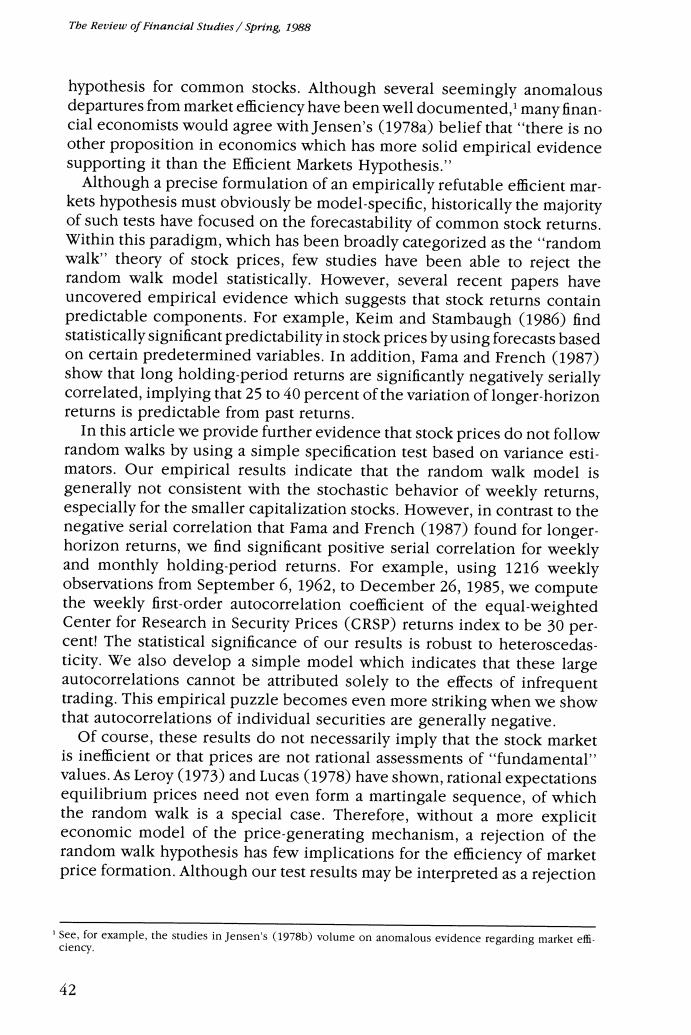正在加载图片...

The Review of Financial Studies Spring,1988 hypothesis for common stocks.Although several seemingly anomalous departures from market efficiency have been well documented,1 many finan cial economists would agree with Jensen's(1978a)belief that"there is no other proposition in economics which has more solid empirical evidence supporting it than the Efficient Markets Hypothesis." Although a precise formulation of an empirically refutable efficient mar- kets hypothesis must obviously be model-specific,historically the majority of such tests have focused on the forecastability of common stock returns. Within this paradigm,which has been broadly categorized as the "random walk"'theory of stock prices,few studies have been able to reject the random walk model statistically.However,several recent papers have uncovered empirical evidence which suggests that stock returns contain predictable components.For example,Keim and Stambaugh (1986)find statistically significant predictability in stock prices by using forecasts based on certain predetermined variables.In addition,Fama and French (1987) show that long holding-period returns are significantly negatively serially correlated,implying that 25 to 40 percent of the variation of longer-horizon returns is predictable from past returns. In this article we provide further evidence that stock prices do not follow random walks by using a simple specification test based on variance esti- mators.Our empirical results indicate that the random walk model is generally not consistent with the stochastic behavior of weekly returns, especially for the smaller capitalization stocks.However,in contrast to the negative serial correlation that Fama and French(1987)found for longer- horizon returns,we find significant positive serial correlation for weekly and monthly holding-period returns.For example,using 1216 weekly observations from September 6,1962,to December 26,1985,we compute the weekly first-order autocorrelation coefficient of the equal-weighted Center for Research in Security Prices(CRSP)returns index to be 30 per- cent!The statistical significance of our results is robust to heteroscedas- ticity.We also develop a simple model which indicates that these large autocorrelations cannot be attributed solely to the effects of infrequent trading.This empirical puzzle becomes even more striking when we show that autocorrelations of individual securities are generally negative Of course,these results do not necessarily imply that the stock market is inefficient or that prices are not rational assessments of"fundamental' values.As Leroy (1973)and Lucas (1978)have shown,rational expectations equilibrium prices need not even form a martingale sequence,of which the random walk is a special case.Therefore,without a more explicit economic model of the price-generating mechanism,a rejection of the random walk hypothesis has few implications for the efficiency of market price formation.Although our test results may be interpreted as a rejection 'See,for example,the studies in Jensen's (1978b)volume on anomalous evidence regarding market effi- ciency. 42